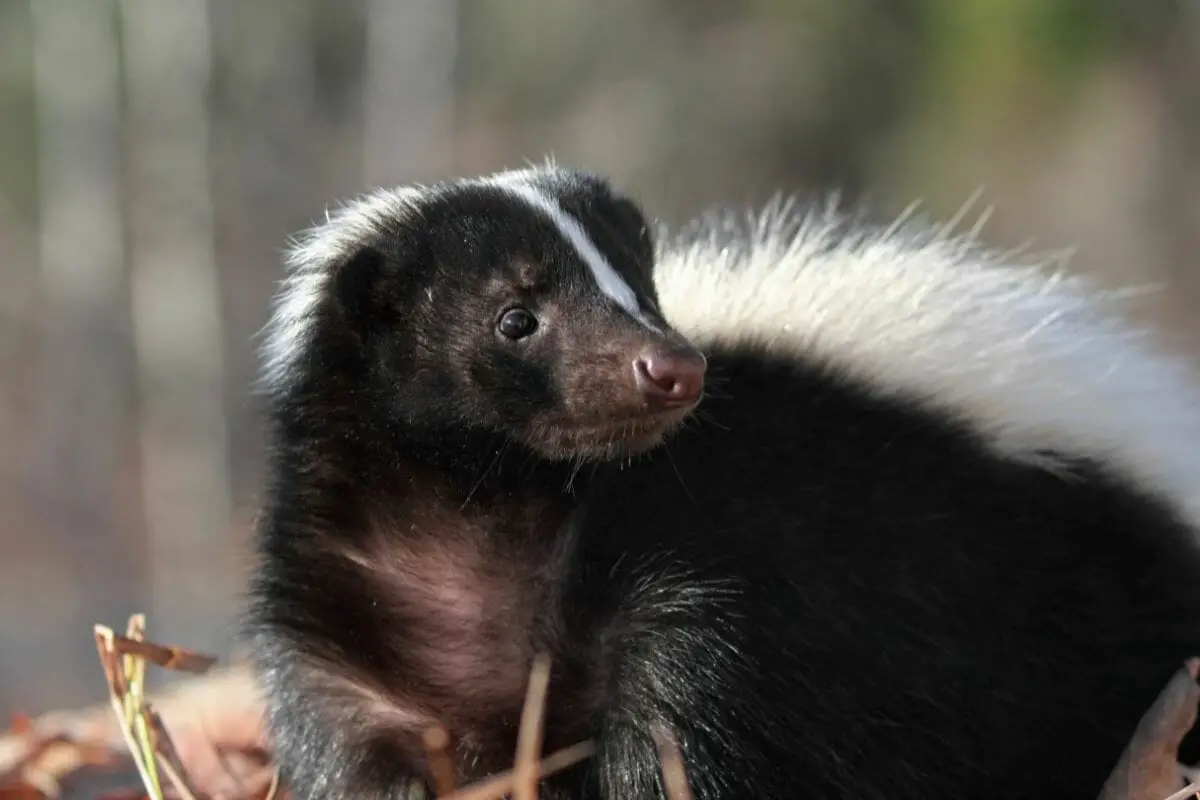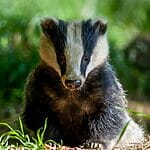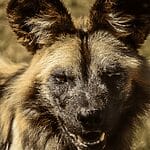Skunks, which are creatures relatives of weasels, badgers, and polecats, will consume everything from mice to bees.

There are 12 different skunk species that can be found overseas, despite the fact that the Western Hemisphere is home to the majority of them.
Skunks of all varieties have a lot in common. They can all release strong scents, for instance, whenever they’re agitated in any way. This frequently assists small animals in warding off predators, whether they are people or other animals.
Skunks in general also appear to be nocturnal creatures, which means that most of their activity occurs at nighttime or if the sun isn’t out.
They mostly spend their time napping whenever the sun is out. Skunks commonly have coats that are black or dark brown with some sort of white pattern on them.
The 12 various species of skunks have a tonne of fascinating information, all of which we list here! To understand more about these fascinating species, keep reading!
Type of Skunk in The World of Wildlife
Despite the fact that the Western Hemisphere is home to the majority of skunk species, 12 different skunk species can be found overseas. They all share a lot in common. They can all release strong scents whenever they’re agitated, for example. The ability to ward off predators, be they humans or other animals, is often useful for small animals.
Striped Skunks
Striped skunks are the type of skunk that most people picture when they consider skunks since it is so easily recognisable.
Striped skunks, which have two white stripes down their backs, are also known to release a strong stink if they are scared, alarmed, or upset in any other way.
These particular skunks eat bugs, smaller animals (such as mice and eggs), and leafy greens.
Additionally to eating scorpions occasionally, striped skunks were known to consume bees, wasps, and even beetles.
Skunks may also consume snakes if necessary because many of them are venom-immune, allowing them to easily consume venomous rattlesnakes.
Hooded Skunks
Even though they appear so similar, striped and hooded skunks can be distinguished with close inspection.
In comparison to striped skunks, hooded skunks have softer coats and longer tails.
On their backs, they may also have white stripes, though occasionally they do not; striping might vary.
Hooded skunks can come in a variety of colour patterns.

And some have a single broad, white dorsal stripe, while some are wholly black with the exception of a white hood and a few white patches on the tail.
Western Spotted Skunks
Western spotted skunks resemble regular skunks except that they frequently have a variety of white stripes running in threes across their body.
They have more stripes than that of a typical striped skunk as a result.
These creatures can be found in both woodland areas and populated areas, while their favored habitats can vary based on the resources available in their particular area.
Some even reside close to canyons, so look around!
Eastern Spotted Skunks
Eastern spotted skunks are nocturnal, slender animals with a variety of stripes that give them a distinctive appearance from other striped skunks.
These skunks are indigenous to eastern North America, with a few isolated populations also existing in the east of Mexico and Canada.
Eastern spotted skunks seem to be omnivores, along with the other skunks mentioned here.
Depending on what is abundant at the moment, they will consume various kinds of flora and tiny animals throughout the seasons.
Southern Spotted Skunks
Like other skunks, southern spotted skunks are black and white creatures that are capable of producing intense aromas to frighten away possible predators.
They are capable of doing this whenever they are angry. They can even aim their spray straight at predators to attack them!

Pygmy Spotted Skunks
The pygmy spotted skunk is among the tiniest varieties of skunks; they are so small that they can fit in the palm of an adult human.
These creatures have unique white stripes running through their black fur, just like other skunks do.
These skunks, however, resemble weasels a lot more than any other kind.
American Hog-Nosed Skunks
The American hog-nosed skunk, one of the biggest skunks in the world, has a massive solid stripe running the length of its black fur. It’s interesting to note that their tail is all-white.
These animals can survive anywhere thanks to the variety of habitats they inhabit, including canyons, rocky terrain, and woods.
They are omnivores, thus they eat both small creatures that they can catch and fruit and other vegetation.
Striped Hog-Nosed Skunks
Despite being much smaller than other skunk species, the striped hog-nosed skunk is remarkably similar to other skunks in that they have a single white stripe that can divide into two along their bodies.
These creatures will consume a variety of insects, plants, and small mammals.
Even animal corpses have been seen being consumed by some striped hog-nosed skunks.
Humboldt’s Hog-Nosed Skunks
Although its stripes are all white, regardless of the color of their coat, The Humboldt’s hog-nosed skunk can be either black or reddish-brown in colour.
Contrary to most other skunks on this list, they actually primarily consume insects, though they can also consume fruit and small mammals.
Molina’s Hog-Nosed Skunks
Molina’s hog-nosed skunks are small, white and black animals with variable white stripes. They frequently have all-white tails.
Either open spaces or shady woodlands are preferred habitats for these species.
They can consume plants, small animals, snakes, insects, and other creatures because they are omnivores.
Indonesian Stink Badgers
The Indonesian stink badger is a fascinating creature with a skunk-like ability to release strong aromas, an anteater-like nose, and a badger-like face.
Although they occasionally exhibit white fur tufts or stripes on their bodies, these species typically have black or brown fur.
Palawan Stink Badgers
The Palawan stink badger is one fascinating skunk. They typically have dark brown fur, stocky bodies, and long, pointed noses.
On their body, their fur may have spots that are yellow or brown.
It’s interesting how little is understood about the stink badger in Palawan.
These creatures are thought to be fragile, which indicates that they run the risk of going extinct.
However, a lot of biologists think that these animals behave very much like Indonesian stink (see also: Animals That Stink)badgers do!
Final Thoughts
Mephitidae, which means “stink,” is the family of mammals that includes skunks.
They can live up to 3 years in the wilderness or up to ten years in captivity and are found in forest borders, forests, grasslands, and deserts. Since they are omnivorous creatures, their diets fluctuate with the seasons.
Skunks, often perceived as pests, are unique creatures with distinct behaviors and characteristics. Skunks typically dwell in dens or burrows, which can be found in both wild and suburban areas.
The common North American skunk, recognized by its prominent white stripe and furry tail, has adapted well to suburban life. Skunks are generally nocturnal, searching for food sources ranging from insects to pet food, often leading to them being attracted to human settlements.
This skunk musk is a tool for pest control against predators, yet it also contributes to their reputation as pests. Skunks also play a role in ecosystem balance by eating insects and grubs. However, when a skunk takes residence in crawl spaces or similar areas on your property, wildlife removal might become necessary.
Finally, understanding skunks involves recognizing their ecological role and the challenges they present in suburban neighborhoods.
From their distinct black and white fur around the gland area to their longer tails with a white tip, skunks are an integral part of North American wildlife. Proper management and awareness can ensure peaceful coexistence between humans and these intriguing animals.
- What Should I Do If A Koala Bites Me? Safety Guide - 2024-05-30
- Are Kangaroos Born Without Hind Legs? A Fascinating Journey - 2024-05-30
- Animals That Look Like Squirrels - 2024-05-30








